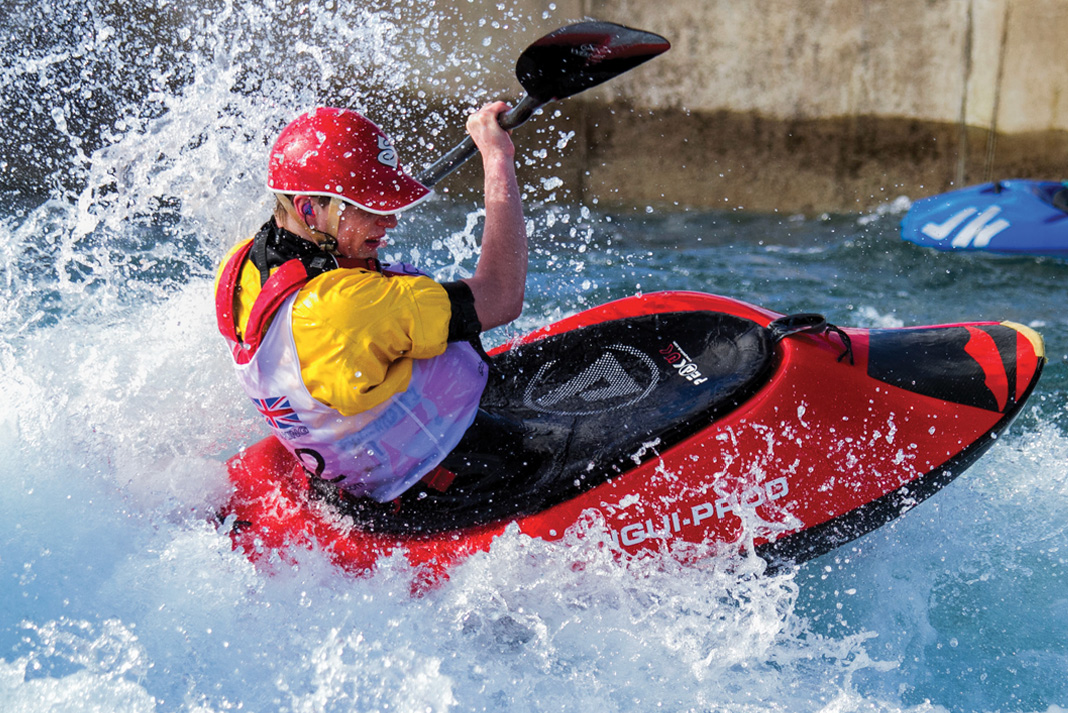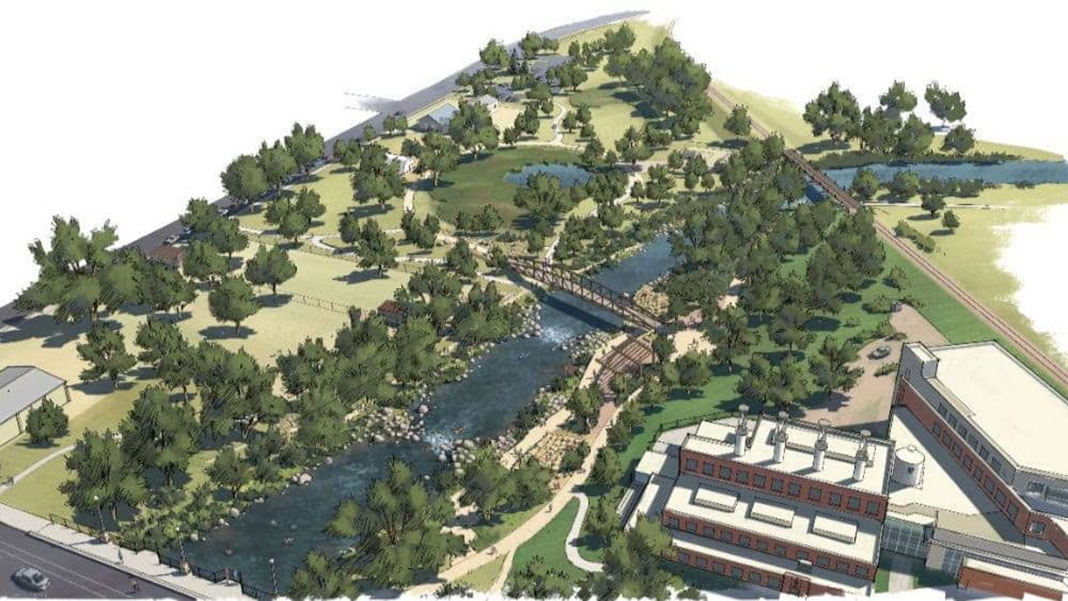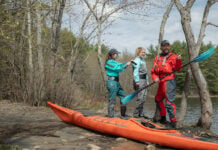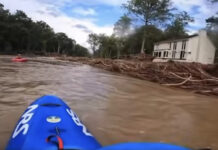It was a bright fall day in Durango, Colorado, and seven young slalom kayakers were training after school on the Animas River. As they worked on skills with coach and Olympian Cathy Hearn-Röthenmund, another group of kids in the local mountain bike club did interval work on the trail that runs alongside the river, often full of birders, cyclists and young families. This was a quintessential moment in Durango, a town with a fiercely strong paddling community and a whitewater park that ties them all together. A 2006 study showed whitewater recreation on the lower Animas had an annual economic impact totaling $19 million.
Inside the restoration of Durango Whitewater Park
The young paddlers that day were just a tiny fraction of the passionate river users drawn to the Animas and the 1,200-foot-long Durango Whitewater Park. Local paddling legend Kent Ford estimates roughly one-third of the 18,000 residents of Durango own a raft, canoe, kayak or paddleboard. Located less than a mile from downtown, the parking lot near the river is often full of boats, boards, inner tubes and duckies adorning roof racks.
One of the oldest whitewater parks in America, Durango continues to undergo upgrades to make the park safer and more suited to a wider variety of users. Enthusiasts, along with commercial rafting companies and private rafters, come for waves like Smelter, Corner Pocket, Ponderosa and Clock Tower. These year-round paddling opportunities for Durango residents are an important part of the local economy.

The original Durango Whitewater Park was built in the early 1990s. Rocks the size of 55-gallon trash cans were placed in the river, but since the rocks were not grouted down, the free-flowing Animas altered their position season to season. When the city of Durango secured recreational water rights to preserve the river’s natural flow for boaters, upgrades were required at a construction cost of approximately $1.5 million.
Scott Shipley, owner of S2o Design and Engineering, says the design process and modernizing the park was tricky. “There’s a lot of stakeholders in that town,” he says.
After an extensive consultation and public process, S2o redid the entire reach of the park beginning in December 2013, creating two new waves—Ponderosa and Clock Tower—and restoring two old waves—Smelter and Corner Pocket.
Durango’s grand re-opening
The updated park opened in 2014 and in a town saturated with paddlers, everyone has an opinion on the rebuild. Many are pleased, especially as the changes provide a more exciting experience when water levels are low. However, some local rafting companies argued that rebuilt features negatively affected their trips and necessitated portaging around waves known for flipping rafters at high water.
This winter S2o will do some further fine-tuning on Ponderosa and Corner Pocket to adjust how they flow at over 6,000 cfs, as well as create a new feature not yet seen at high flows. On natural river courses, continued maintenance and fine-tuning like this is the norm. In Colorado alone, whitewater parks in Salida, Buena Vista, Vail, Eagle and Boise have all required some kind of adjustments.
Regardless of opinion or paddling discipline, construction will be complete in time for the whitewater community to come together at the annual Animas River Days, a celebration of the river and park. The festival culminates in the River Parade, where hundreds of vessels—ranging from inflatables with couches strapped to them to 10 rafts tied together—carry revelers downstream through the park while spectators watch from under the cottonwoods and native willows on the banks of the Animas.
“10 seconds until he bails…” | Feature photo: Heather Jackson





 This article was first published in the Spring 2017 issue of Rapid Magazine.
This article was first published in the Spring 2017 issue of Rapid Magazine. 




